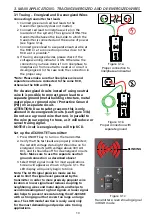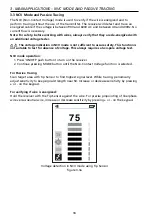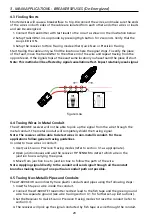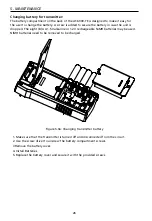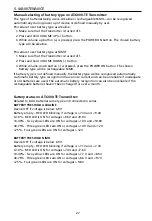
12
�
IMPORTANT NOTICE, PLEASE READ BEFORE YOU START TRACING
Avoiding signal cancellation problems with a separate ground connection
The signal generated by the transmitter creates an electromagnetic field around the wire.
This field is what is detectable by the receiver. The clearer this signal, the easier it is to
trace the wire.
If transmitter is connected to two adjacent wires on the same circuit (for example, line/phase
and neutral wires), the signal travels in one directions through the first wire and then
returns (with opposite direction) through the second one. This causes creation of two
electromagnetic fields around each wire with opposite direction. These opposing fields
will partially or completely cancel each other out, making wire tracing difficult if not
impossible.
Figure 3.0a
To avoid the cancellation effect, a separate neutral or separate ground connection method
should be used. The red test lead of the transmitter should be connected to the line/phase
wire of the circuit you wish to trace, and the green lead to a separate neutral or ground
(such as water pipe, ground stake, metal grounded structure of the building, or outlet
ground connection of an outlet) on a different branch. It is important to understand that
an acceptable separate neutral/ground is NOT the terminal of any receptacle on the same
branch as the wire you wish to trace. If line/phase wire is energized and the transmitter is
properly connected to a separate neutral/ground, the red LED on a transmitter will light up.
The separate neutral/ground connection create the maximum signal strength, because the
electromagnetic field created around the line/phase wire is not being cancelled by a signal
on the return path flowing along an adjacent wire (ground or neutral) in the opposite
direction, but rather through the separate connection.
3. MAIN APPLICATIONS
Figure 3.0b
















